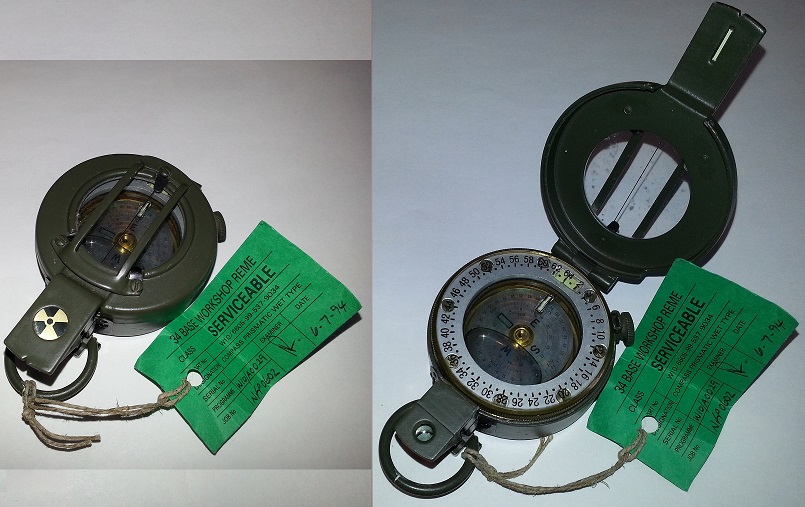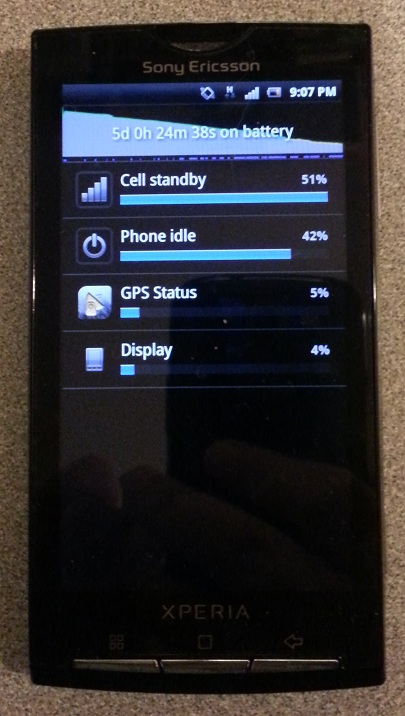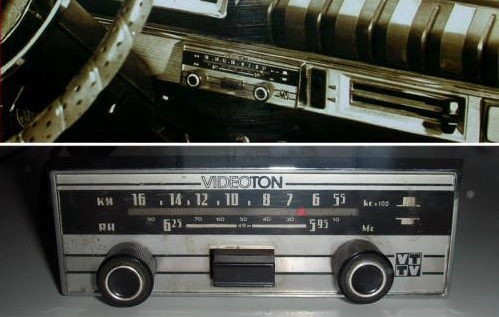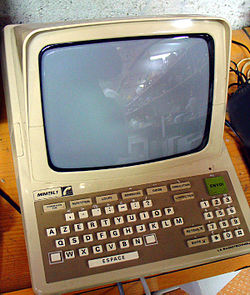Last night, I looked out my hotel window and saw the tallest building in the world. This morning, I looked out again, and it’s still there:
Dubai looks like an amazing place.
It was less than 24 hours ago that I wrote about the death of a friend and now I have to do it again: I just learned that Palmer Hanson died a few days ago, after a prolonged illness.
Palmer’s name was well known to the calculator enthusiast community ever since the days of the friendly rivalry between owners of high-end Texas Instruments and Hewlett-Packard calculators in the late 1970s. Palmer was famous, among other things, for writing one of the fastest calendar printing programs for the TI-59 calculator. Though I never met Palmer in person, over the past decade and a half I corresponded with him many times, on account of my Web site dedicated to programmable calculators, rskey.org, and the archival material that I publish there.
It was only a few weeks ago that I received an unexpected parcel from Palmer, with a batch of rare newsletters that he sent to me for scanning and Web publication. I gladly complied. Another batch of newsletters followed shortly thereafter; this batch is still sitting on my desk, as I’ve been busy with work lately and have not had the time to do the scanning.
Therefore, I knew that Palmer was gravely ill, but I was nonetheless hoping that he would stay with us for a little while longer. Unfortunately, when our time comes there is not much we can do, and Palmer’s time came after a long and, I sincerely hope, happy life.
Googling his name just now, I came across a video of a presentation he gave less than two years ago, at HHC2012:
Good-bye, Palmer. I feel privileged to have known you, even if it was just online.
 So there was this whimsical invention in Futurama, the Smelloscope, created by the eccentric Professor Farnsworth.
So there was this whimsical invention in Futurama, the Smelloscope, created by the eccentric Professor Farnsworth.
Who’d have thought that something like this would ever enter the realm of reality.
But it did.
Apparently, police are now using smelloscopes, pardon me, nose telescopes, er, I mean, olfactometers (sounds more respectable, doesn’t it?) to sniff out cannabis. Or, to be more precise, to measure the pungency of the smell of cannabis plantations, as it has apparently become a nuisance to residents of Denver and other cities.
Life imitating fiction, I guess.
For the first time in years, I was able to add a truly new (to me) programmable calculator to my Web museum: the Casio FM-300. What a delightful find!
This has been making the rounds on the Internets in the past few days: a modular mobile phone concept, with swappable parts.
Except that (with apologies to its inventor and supporters) I don’t think it will ever work. And no, not because conspiring corporations will torpedo it. (For what it’s worth, I am a free agent: I am not on the payroll of any conspiring corporations.)
The first reason is mechanical. For the phone to be robust, the backboard would have to be really strong and bulky. The connectors would have to be rock solid. Yes, it can be done, but only by using expensive materials, and the backboard itself will be half as thick already as a modern phone like a Samsung Galaxy.
The second reason is power and signaling. The placement of components on a modern phone mainboard is not accidental. Signal paths matter when things run off a multigigahertz clock. Power matters when some components can momentarily draw significant current. The placement of antennas matters, to maximize efficiency and minimize interference from the phone’s own components.
Third, the design will inevitably prove too constraining. Take modern PCs as an analogy. Yes, they are modular (it is much easier, of course, to make a desktop PC modular.) But only to a point. Try shoving an old ISA extension card into a modern PC. Even if it were perfectly functional (e.g., an old modem, serial/parallel or low-speed communication card that never needed more than ISA speeds) you can’t use it anymore, as no modern motherboard supports ISA slots. Many modern motherboards don’t even support PCI slots. Processor sockets change. Memory module standards change. Even power supply standards changed a surprising number of times. (You’d think there are only so many ways to supply 12VDC, 5VDC, and maybe 3.3VDC, but you’d be wrong.)
Still, Phonebloks is a neat idea. In fact, it’s one of those ideas that may never work as intended, but may still inspire other useful inventions.
Here is a beautiful military relic, a gift from a family friend who knew that I was a sucker for old technology:

It is a very conventional compass, floating in oil in a non-magnetic brass casing. Our friend was concerned about the radiation symbol on the cover: as it turns out, this particular compass had fluorescent markings that were illuminated by the presence of small amounts of radioactive tritium.
As tritium is a low-energy beta emitter, it poses almost no health risk (unless you happen to inhale or consume some quantities of it) and thus it is safe for use as a form of “permanent illumination”. Unfortunately, tritium is also used in thermonuclear weapons, so its possession and sale are often regulated. In any case, this old compass is long past its “use before” date; I don’t know how old it actually is, but its inspection sticker dates back from 1994. The tritium appears to be long gone (not exactly a surprise, given tritium’s relatively short, 12.3 year half life), as the marking are completely dark.
Still it is a beautiful device, and I am very grateful to our friend for offering this to me as a gift. It will be cherished.
One of the reasons why I was eager to ditch my “old” (barely over two years) Sony Ericsson Xperia X10 smartphone is that its battery started to misbehave. Or at least I assumed it was the battery: under heavy load (e.g., recording video) the phone shut down prematurely. I bought an off-market replacement battery that seemed to solve the problem for a while but eventually that battery, too, started to show the same symptoms.
Now that the X10 is no longer a “mission critical” device, I feel free to experiment with it. Once I was done rooting the phone, I was able to initiate calibration of its battery (really, just deleting the battery history file). After repeatedly discharging, calibrating and recharging the battery, I tried a simple test: to see how long the battery lasts under a minimal load (valid “in service” SIM card, no real use other than occasionally getting a GPS lock and checking the battery voltage.)
What happened was astonishing. Previously, the longest time I was able to keep this phone running was a tad over two days. But now? A record FIVE days and 24 minutes. Frankly, I wouldn’t believe it if I had not seen it with my own eyes.

Now I am curious. How long will it take to recharge the phone? Will it give the battery a full charge? Will it still shut down prematurely afterwards if I start recording video?
I am also wondering… a voltage drop is not an uncommon symptom for an aging Li-polymer battery. But I should also see diminished battery capacity. A smartphone running for five days… that does not sound diminished to me! Could it be that the problem is with the phone itself, its power regulating circuitry? How can one tell without purchasing an expensive battery, preferably not from an off-market Hong Kong reseller?
 I spent some of my time today building a calculator.
I spent some of my time today building a calculator.
I still know how to handle a soldering iron, but this time around, the design is not of my own. The credit goes to Michael Berger, a calculator enthusiast in Germany who decided to resurrect a classic East German desktop calculator, the Robotron K-1003 in the form of a microcontroller-based kit.
And thanks to Michael, I had some pre-Christmas fun. But now that the calculator is up and running, I feel compelled to find its original German-language manuals and understand its programming model.
 I came across this picture on Facebook the other day, a photo of the cheapest car radio made in Hungary back in the 1970s. It was a very basic radio manufactured by Hungary’s dominant electronics manufacturer Videoton. We had the exact same type of radio in the exact same model car (a Lada 1200 if I am not mistaken) when I was in grade school.
I came across this picture on Facebook the other day, a photo of the cheapest car radio made in Hungary back in the 1970s. It was a very basic radio manufactured by Hungary’s dominant electronics manufacturer Videoton. We had the exact same type of radio in the exact same model car (a Lada 1200 if I am not mistaken) when I was in grade school.
Funny thing about this receiver is that it wasn’t an AM-FM radio. It was an AM + shortwave radio, with a single shortwave band tuned to 49 meters.
The same 49-meter shortwave band that was the preferred band used by Cold War era propaganda stations broadcasting in Hungarian, including Radio Free Europe, Voice of America, the BBC, Deutsche Welle, even The Vatican.
We lived in the town of Visegrad at the time, only 40 km north of Budapest but separated from the capital by some hills. Because of the terrain, reception of Budapest stations was often spotty. Which may explain why this little car radio had trouble tuning to the 2 MW transmitter of Radio Kossuth, located in central Hungary, but had no trouble at all with the reception of the aforementioned propaganda stations; those were always crystal clear.
As to why a communist-era state-owned electronics factory was manufacturing a car radio with such excellent short wave sensitivity, I have no idea. Perhaps, in an early experiment with capitalism, they were trying to respond to market demand?
 It appears that there is middle ground after all between pro-nuclear complacency and anti-nuclear alarmism.
It appears that there is middle ground after all between pro-nuclear complacency and anti-nuclear alarmism.
Evan Osnos, writing for The New Yorker, points out that “America’s hundred-and-four nuclear reactors handled hurricane Sandy with far less trouble than other parts of the power grid”. But he goes on to note that a higher storm surge could have caused grave trouble, just as the tsunami did in Japan. He quotes a former nuclear engineer who said that complacency “is precisely that kind of closed or narrow mindedness that allowed Fukushima to happen.” The United States has a significant number of vulnerable plants. Whereas in Japan, the history of the island is known going back well over a thousand years (a history, specifically the history of the tsunami of 869, that Fukushima’s designers chose to ignore, with tragic consequences.) In the US, records only go back a little over three centuries, so if anything, more caution should be warranted.
But Osnos is not advocating shutting down the industry. “the key is not to pretend that the nuclear industry is a house of cards,” he writes, “but to prevent a non-disaster from becoming a disaster.”
Unfortunately, our memory for disasters tends to be alarmingly short. Osnos points out that after a flood wreaked havoc with New York’s subways in 2007, some 30 million dollars were spent on flood protection… and that’s it. Then it was all forgotten. One can only hope that Sandy will leave a more lasting impression when it comes to disaster preparedness, especially when nuclear plants are concerned.
It’s rare these days that I add a new calculator, even a not particularly exciting non-programmable model, to my “museum“, but the other day, I did find an old Sharp 4-function calculator that was previously unknown to me in a thrift store: The Sharp EL-102M.
It’s not every day that I can actually add some new information, however trivial, to the “interwebs”. But today, I received a question from a calculator enthusiast. He wanted to know the meaning of a mysterious “BM” or “BN” logo that he found on the back of a vintage Sharp pocket computer:
I have seen this symbol many times before. I thought I knew what it meant but suddenly, I was stumped. What was it? A standards organization? A quality logo? Something else? Google was of no help either; I was searching high and low but couldn’t find anything even remotely resembling this strange sign.
Then I looked at my collection of scanned calculator manuals and sure enough, on the cover of a vintage Casio manual, I found it. Same logo. It even had some text next to it, but it was not legible. So I started searching my library of paper manuals.
Much to my disappointment, while the logo was present on a few of them, it was not much more legible than the one on the scanned copy. Eventually, I came across a manual that contained a semi-legible version:
So this is it. The logo reads, in case the above is not sufficiently legible:
Mystery solved. And while I nave no clue as to why information about this once prevalent logo is not readily available online, I can confirm that searching with the above full phrases on Google reveals nothing relevant (with one exception; searching for the strings “BM MARK FOR” and “HIGH QUALITY” yields one relevant hit, a scanned PDF copy of the Canon Palmtronic F-7 manual from the Web site of Katherine Wasserman). Well, I guess that is going to change now.
 I just read in Physics Today (actually, their Facebook stream, I believe) that the world’s first commercial CD player, the Sony CDP-101 was launched exactly thirty years ago yesterday, on October 1, 1982.
I just read in Physics Today (actually, their Facebook stream, I believe) that the world’s first commercial CD player, the Sony CDP-101 was launched exactly thirty years ago yesterday, on October 1, 1982.
I’ll refrain from making more “how time flies” comments. Still… thirty years already! What was more amusing though was reading a contemporary audiophile review of the new player and the then available (very meager) selection of CDs.
I have my own theory as to why some audiophiles dislike digital audio. Regardless of sampling and bandwidth, digital audio places a definite limit on what is being transmitted. If the source is sampled at 44,100 samples/second, you get 44,100 samples a second… gone are delusions about ultrasonic content subtly altering the experience or similar nonsense. With analog equipment, there are no such definite limits; you can always push things a little further, in tiny, incremental improvements. In other words, analog equipment gives you an illusion of freedom that is lost in the digital world.
I still prefer CDs over the hiss of audio cassettes or the pops and crackles of LPs. There is one piece of audiophile lore, however, that is not nonsense, much to my surprise. Cables. Years ago, after a discussion with a friend, I sat down and calculated the impedance of a typical piece of speaker cable. I don’t remember the exact numbers, but there was a very noticeable frequency dependance (amounting to several dB) in the audible range between 20 Hz and 20 kHz.
Still, it does not change my fundamental view on the subject: if a piece of music is not good enough to listen to on a crappy old transistor radio, no amount of expensive equipment will change it, just like putting lipstick on a pig does not make it cuter. And if the music is good enough to listen to on that old radio, you’ll enjoy it anyway.
The other day, I purchased a 32 GB USB stick for fifteen dollars. 32 GB? That is four DVDs. Some 50 or so CD-ROMs. Almost 500 times the hard disk space that I had in my first IBM compatible PC. More than 22,000 3.5″ floppy disks. More than 200,000 single density 5.25″ floppy disks that I used to use with my Commodore 64. More than half a million times the RAM of that Commodore 64. More than 30 million times the memory of a Sinclair ZX-80 from 1980. For less than one tenth the price, I might add, even before adjusting for inflation.
Some people, when they contemplate these numbers, conclude that such leaps could not have just happened; surely, there is alien technology involved. The government knows.
Then again… if we had access to alien supertechnology, don’t you think that the capacity of electric storage batteries would have advanced more than the pitiful factor of 5 or so that distinguishes a modern Li-ion battery from its 150-year old lead-acid cousin?
Poor Nokia. The struggling mobile phone manufacturer is about to introduce its new flagship phone, the Lumia 920. The phone supposedly has a high quality camera with image stabilization, which Nokia proudly showed in a YouTube ad. The ad shows a young couple, the geeky man taking videos of her girlfriend while they ride bicycles, go to an amusement park, or just generally goof off.
Except that it’s all a fake. Look closely at this frame, about 27 seconds into the video:
Look at the reflection in the window of that mobile home (or whatever it is). Do you see the girl’s goofy boyfriend, riding his bicycle while holding a phone? Of course not. What you do see is a white van with its side door open, revealing a cameraman with a large, professional camera.
Ouch.
I am actually rooting for Nokia. I even think that Windows 8, while a disaster on the desktop, will likely be a good smartphone or tablet operating system if it is given the chance. None of which excuses the phony ad.
To their credit, Nokia admitted the fake right away, and the updated version of the video that is presently on YouTube says that much. Still…
But then, as P. T. Barnum once supposedly said, any publicity is good publicity. Maybe Nokia will actually benefit from the extra publicity that their commercial receives as a result of this fiasco.
To those friends of mine who think I am nuts when I express my concerns about the inevitable coming of Skynet (from the Terminator movies)… say hello to TaserDrone.
Yes I know, it’s just a proof-of-concept prototype and not a very efficient one at that, but still…
News flash this morning: the first (of hopefully many) Japanese nuclear reactor is back online.
On March 11, 2011, the fifth biggest earthquake in recorded history, and the worst recorded earthquake ever in Japan, hit the island nation. As a result, some 16,000 people died (the numbers may go higher as some are still listed as missing). Most were killed by the natural disaster directly, as they drowned in the resulting tsunami. Some were killed as technology failed: buildings collapsed, vehicles crashed, industrial installations exploded, caught fire, or leaked toxins.
None were killed by the world’s second worst nuclear accident to date, the loss of power and resulting meltdown at the Fukushima Daiichi nuclear power plant. Some of it was due, no doubt, to sheer luck. Some if it due to the inherent safety of these plants and the foresight of their designers (though foresight did not always prevail, as evidenced by the decision to place last-resort emergency backup generators in a basement in a tsunami-prone area). The bottom line, though, remains: no-one died.
Yet the entire nuclear power generation industry in Japan was shut down as a result. Consequently, Japan’s conventional emissions rose dramatically; power shortages prevailed; and Japan ended up with a trade deficit, fueled by their import of fossil fuels.
Finally, it seems that sanity (or is it necessity?) is about to prevail. The Ohi nuclear power plant is supplying electricity again. I can only hope that it is running with lessons learned about a nuclear disaster that, according to the Japanese commission investigating it, was “profoundly manmade”; one “that could have been foreseen and prevented”, were it not for causes that were deeply rooted in Japanese culture.
 Last year, many people debated whether or not the Iranians had the wherewithal to hijack that US military drone which they were so proudly displaying afterwards.
Last year, many people debated whether or not the Iranians had the wherewithal to hijack that US military drone which they were so proudly displaying afterwards.
Well, wonder no more. Apparently a team from the University of Texas at Austin showed how it can be done using equipment that cost no more than a thousand bucks.
OK, you say, but this drone was using the non-encrypted civilian GPS signal. True… except that if you simply jam the encrypted signal, many military drones fall back (or at least, used to fall back) to using the civilian signal. (As designed, the encryption was primarily about preventing an adversary from using the high accuracy military GPS signal, not about preventing spoofing.)
 Alas, Minitel is no more. After 30 years of operation, France Telecom will shut down the venerable service this Saturday. While the proprietary, closed architecture of Minitel never caught on outside of France, this “made in France” solution reached nearly half the inhabitants of France in its heyday. Today, Minitel is largely irrelevant thanks to the Internet (this is what doomed other closed architecture commercial online services, such as CompuServe.) Still, if The New York Times is to be believed, at least some farmers are going to miss this reliable service.
Alas, Minitel is no more. After 30 years of operation, France Telecom will shut down the venerable service this Saturday. While the proprietary, closed architecture of Minitel never caught on outside of France, this “made in France” solution reached nearly half the inhabitants of France in its heyday. Today, Minitel is largely irrelevant thanks to the Internet (this is what doomed other closed architecture commercial online services, such as CompuServe.) Still, if The New York Times is to be believed, at least some farmers are going to miss this reliable service.